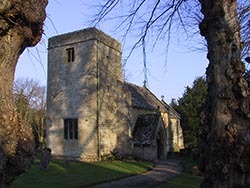
Nigel Hammett RIBA SCA
The church of St Mary , Glympton is set within the grounds of our client’s Estate but is still accessible to the public.
As Conservation Architects recognised by the RIBA, English Heritage and a Society for the Protection of Ancient Buildings (SPAB) Lathbury Scholar on staff, we were asked by the Diocese to conduct a quinquennial inspection as we do for other churches within the Oxford Diocese.
As with all historic churches dating back 800 years or so, you expect to see the wear the centuries have taken. The art of a conservation architect is too see and understand the difference between life’s rich patina and a problem that could compromise the structure. There is then a fine art of judging between it being an immediate or longer-term problem – one that requires full attention, some attention or attention down the road and all complicated by the the fact that a stitch in time, saves nine.
With St Mary, the core fabric of the church is early 13th century. The west Tower was rebuilt in the 16th or 17th century, the Chancel arch was altered in 1849 and the church was thoroughly restored and extended by G.E. Street in 1872. Other internal works were carried out in 1958 but since then, no major alteration works have been carried out.
Despite this, we were pleased to report that the church was in generally good shape.
Our completed inspection set out our findings along with a repair schedule divided over 18 month essentials and what needed to be kept an eye on or scheduled over the next five years.
Typically as in this case, there was immediate pointing required along with the repair or replacement of the Tower parapet coping stones, lead work and related gutter pipes. Some steps required rebuilding, but what was especially urgent was the installation of a lightening conductor and the testing of internal electrics.
Over the next five years we saw that it was essential to investigate and repair the decaying roof timbers, line the chancel ceiling, renew the vestry ceiling and repair the nave ceiling.
We also recommended some complete remedial work to the exterior tombstones.
As with anything, it pays dividends to keep up the maintenance of something that has lasted 800 years. After all no-one wants a catastrophe on their watch.